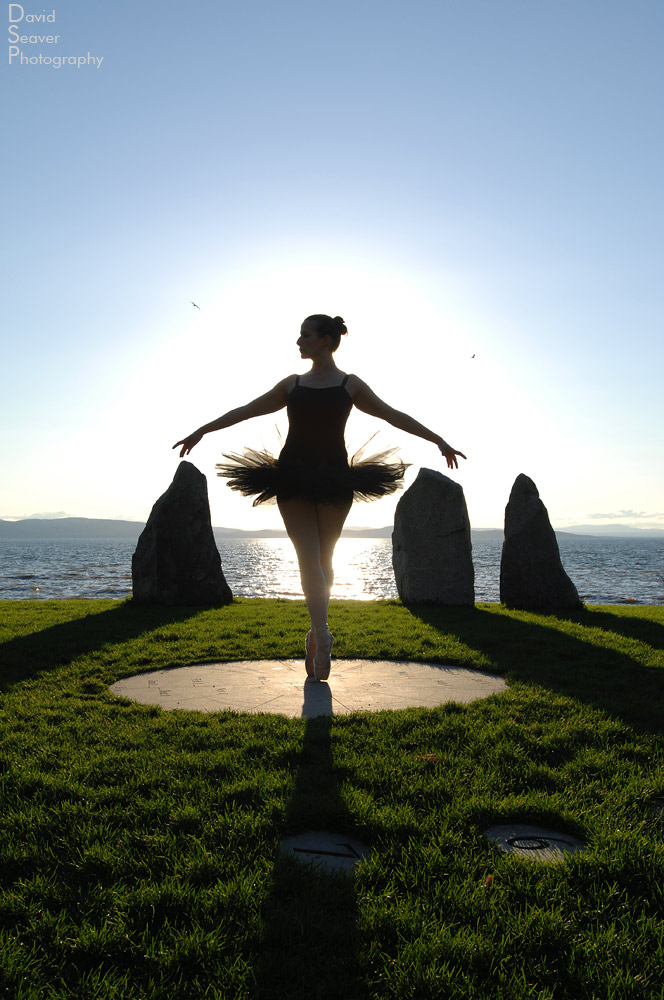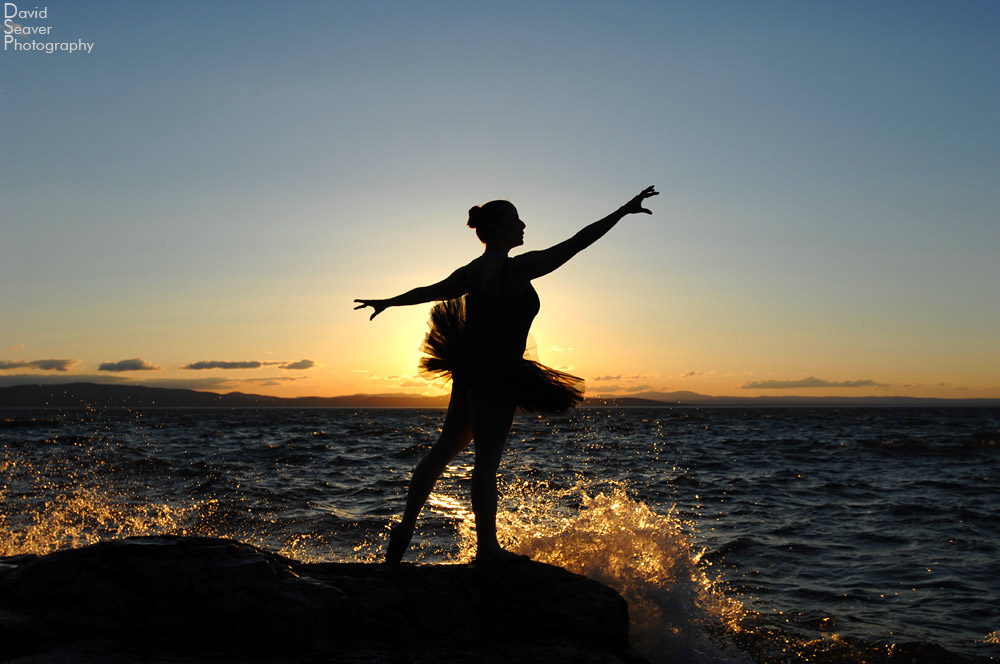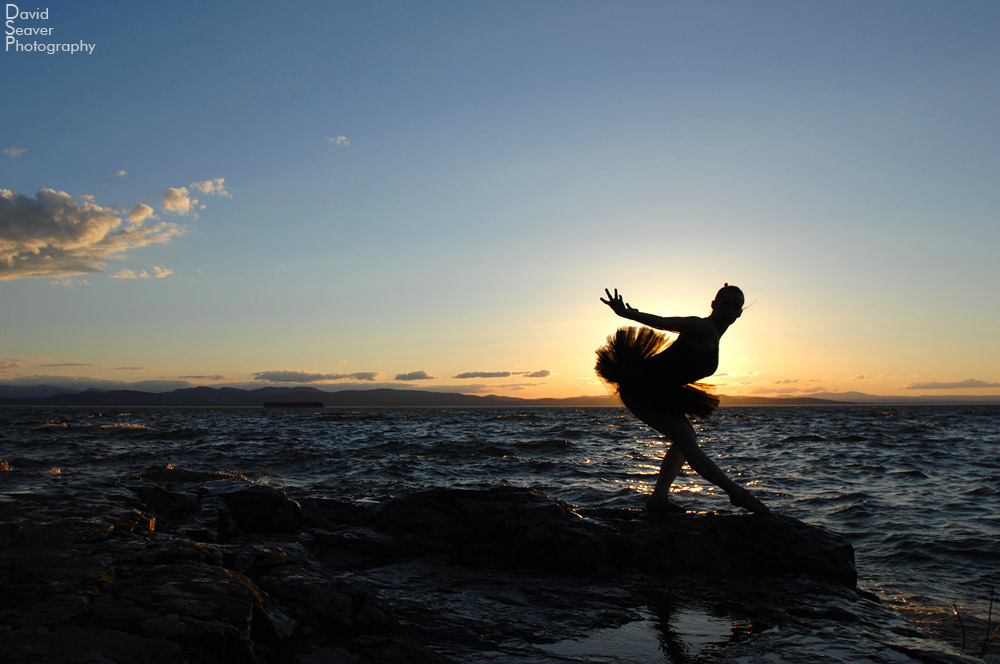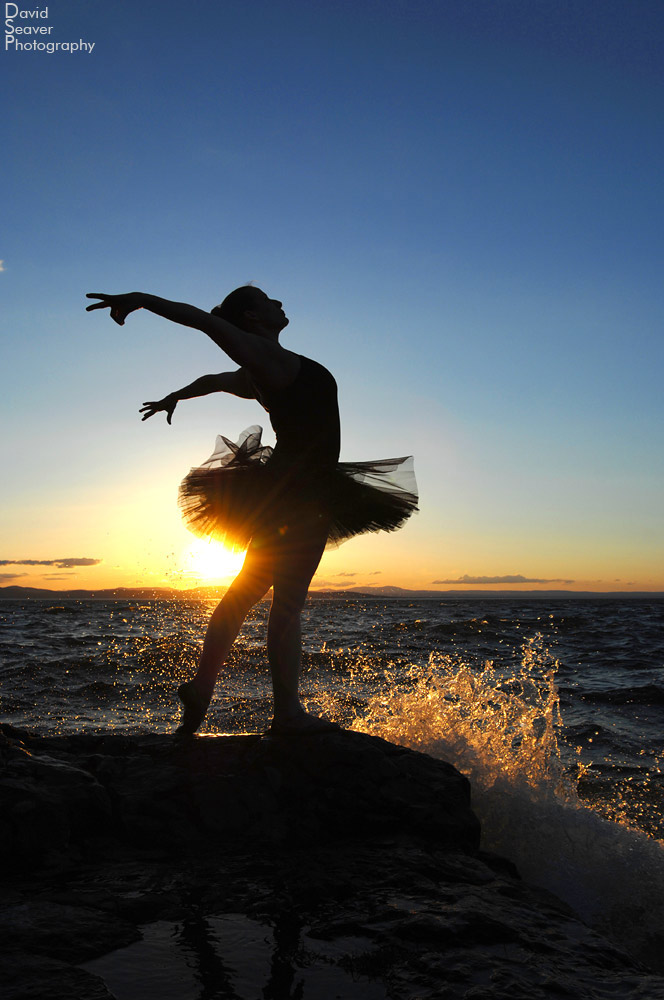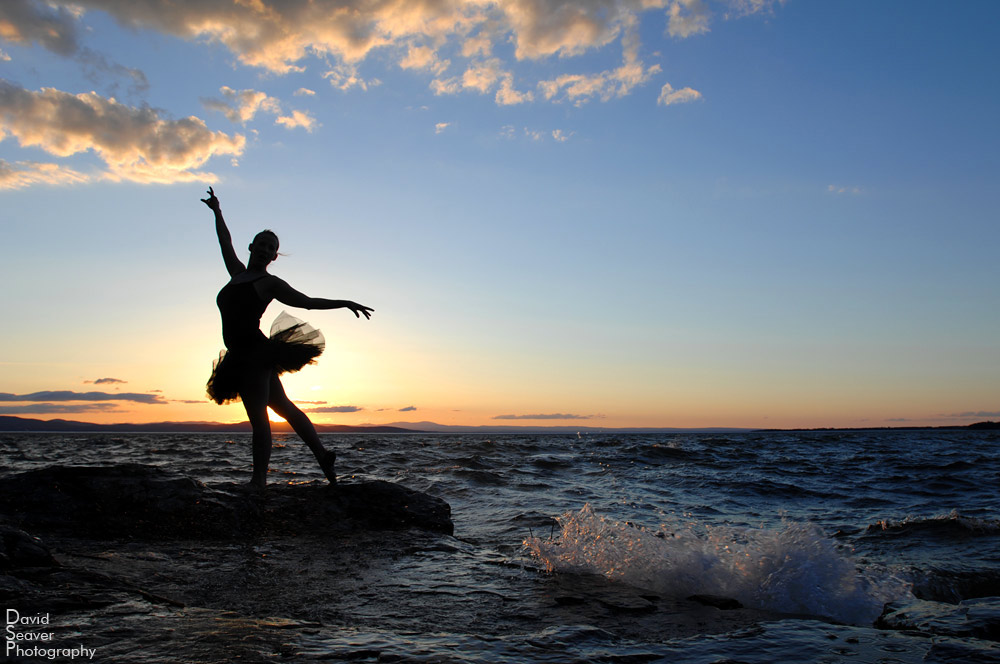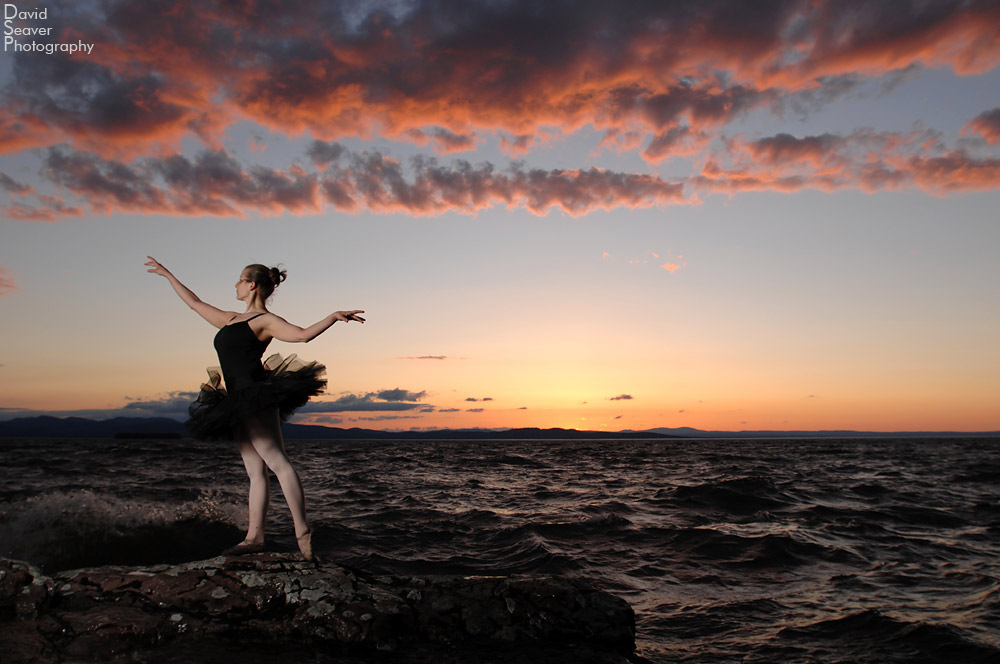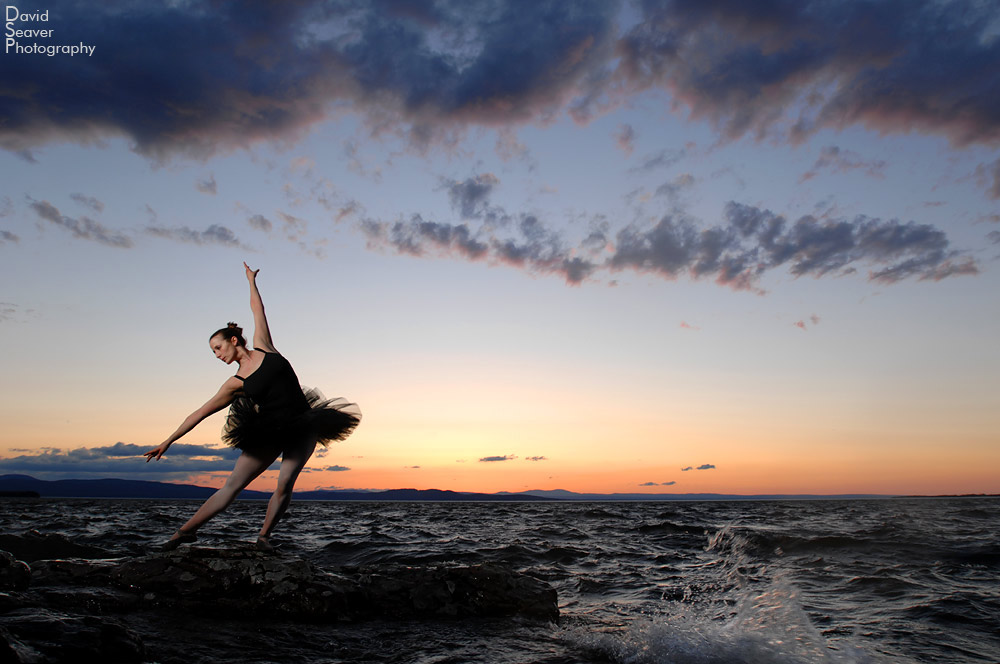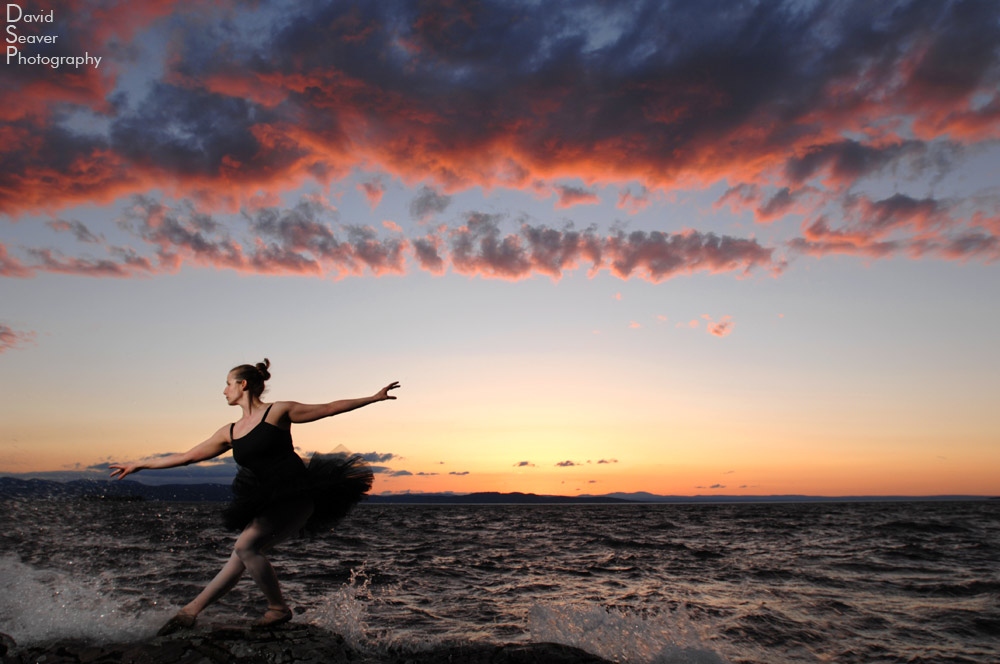How to take great photos of a ballerina in the studio
After getting some awesome photos of Sarah dancing at sunset on Lake Champlain, we met back up at the studio to create some abstract, clean and simple photos to complement the dramatic outdoor ones.
We started on a “fashion gray” backdrop, but when I looked at the camera, all I wanted was a nice clean black backdrop to keep the focus on Sarah dancing. After I switched backgrounds, the photos started to look better. I was using an extremely simple one and two light set up. The two lights I used were both SP-Systems, 3200 Excalibur. Both lights had softboxes on them, one using a 2’x3′ softbox, the other a 36″ hexagonal softbox.
I was looking for soft, directional light. I tried to eliminated any unwanted light bouncing back into the scene by putting up a black muslin backdrop blocking a white wall on one side (the other side I would just have to deal with what came bouncing back).
Most of the lighting was aggressively side lit. I was attempting to get high contrast, good definition along the edges, and good fall off of the light as it wrapped around her. The lights were placed between 70-90 degrees from the camera. Enough to get the edge lit, but with a little spilling over the front of Sarah to get some definition.
The lights were triggered with a radio slave.
Shooting black on black can cause a few issues, namely in post production trying to separate the two, but it’s easily overcome with a little selective burning.
When the aim is to take abstract photos, I generally try and look for slices of a whole shot. I try and focus of the curves and angles of the arms, legs, whatever makes interesting angles. Then I shoot and shoot. Changing things up as much as possible. I found myself moving the lights just a hair forward and backward as I would lose Sarah in deep shadow, or get her too evenly lit.
Even with an ‘easy’ shoot and setup, it’s always challenging to get the right shot.
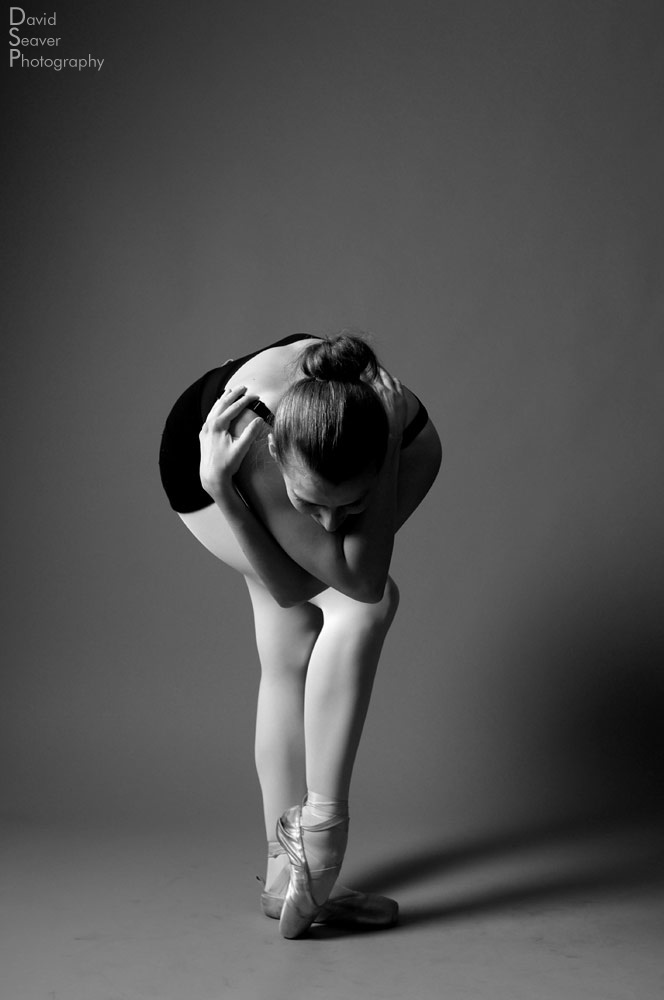
We started with a simple pose, one light, grey background.
Nikon D2x, 17-35, f6.3, iso 100, one studio flash, soft box

Nikon D2x, 17-35, f6.3, iso 100, two studio flashes, soft boxes
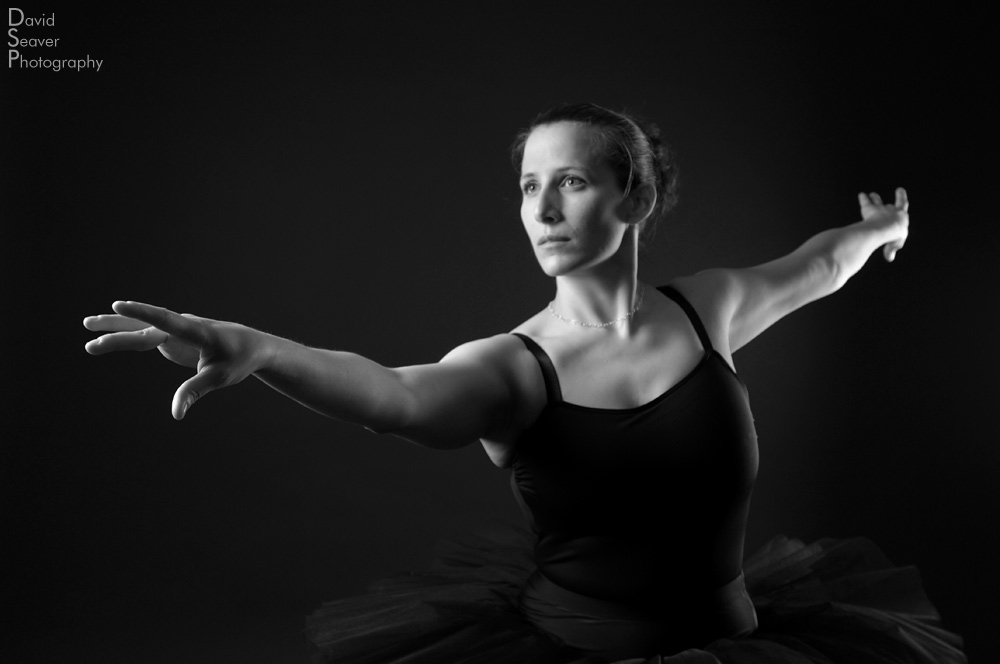
Nikon D2x, 17-35, f6.3, iso 100, two studio flashes, soft boxes
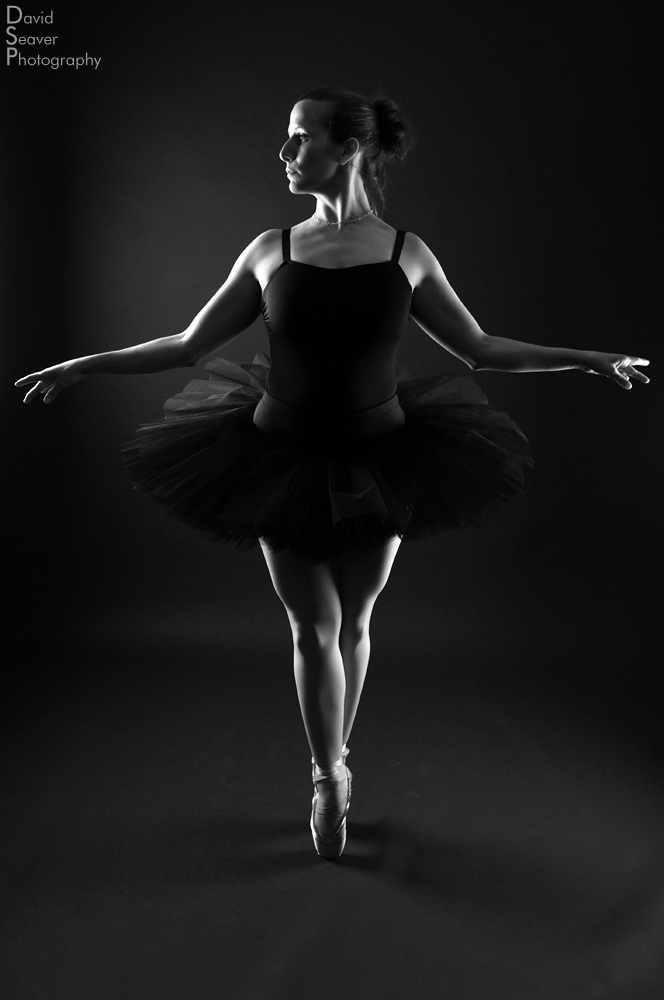
Nikon D2x, 17-35, f6.3, iso 100, two studio flashes, soft boxes
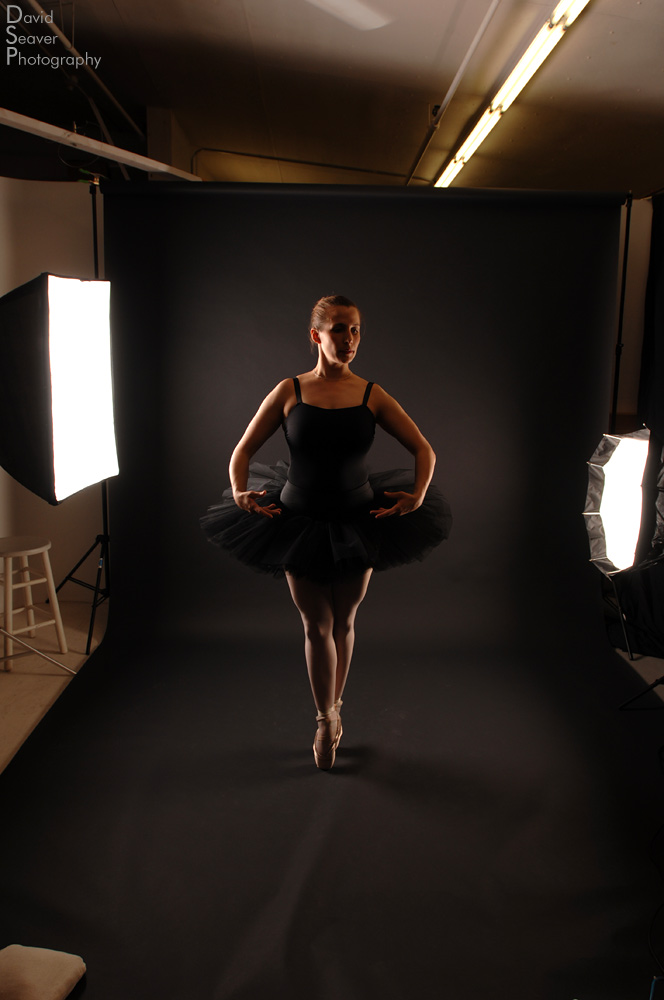
Here’s a quick shot of the setup. Very simple.
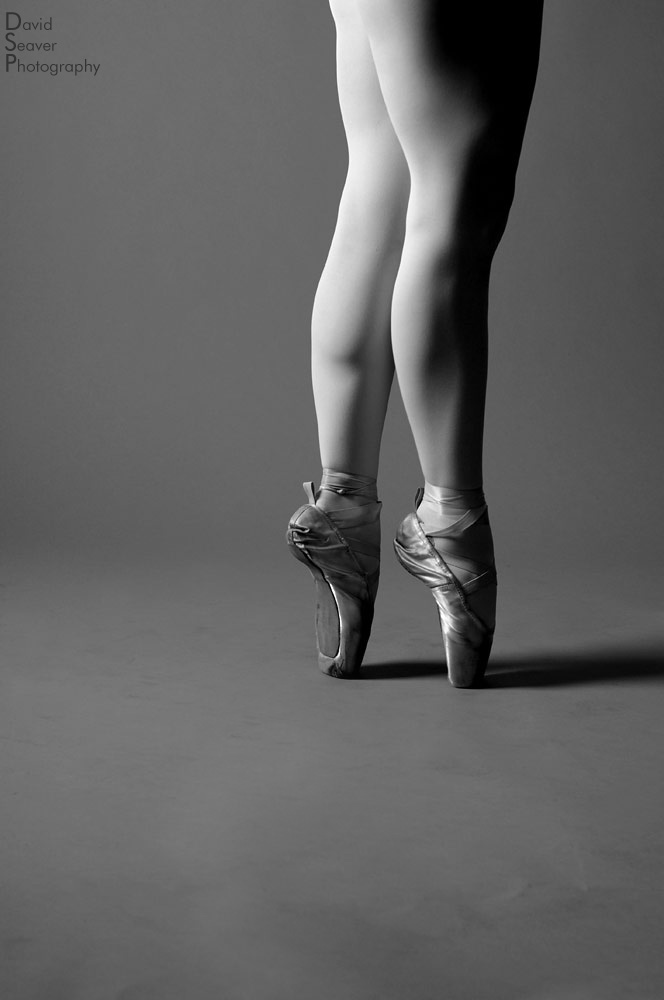
Nikon D2x, 50mm, f5.6, iso 100, one studio flash, soft box
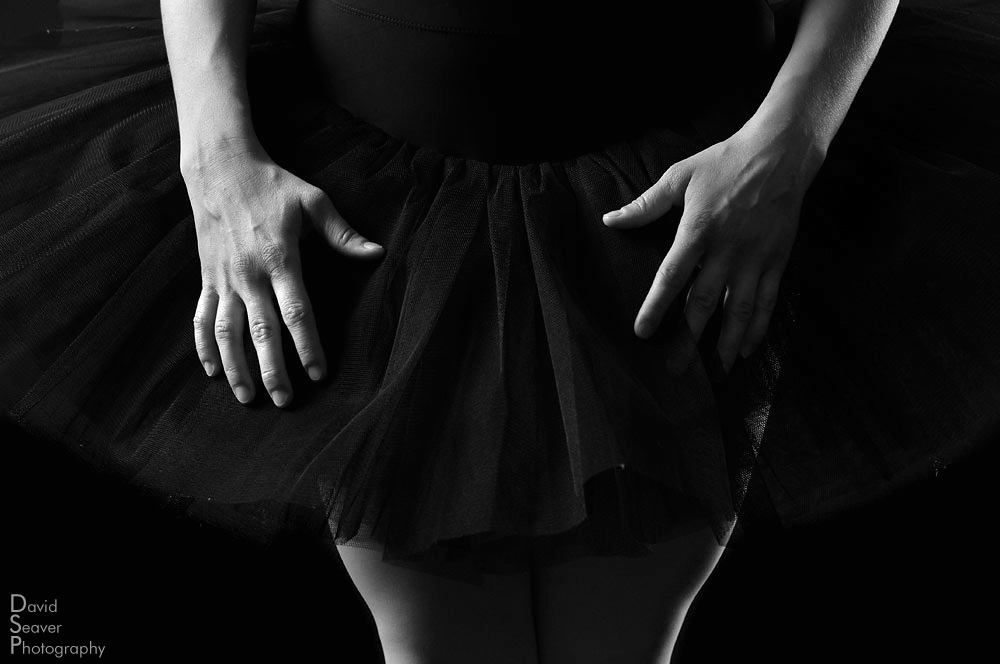
Nikon D2x, 50mm, f5.6, iso 100, two studio flashes, soft boxes
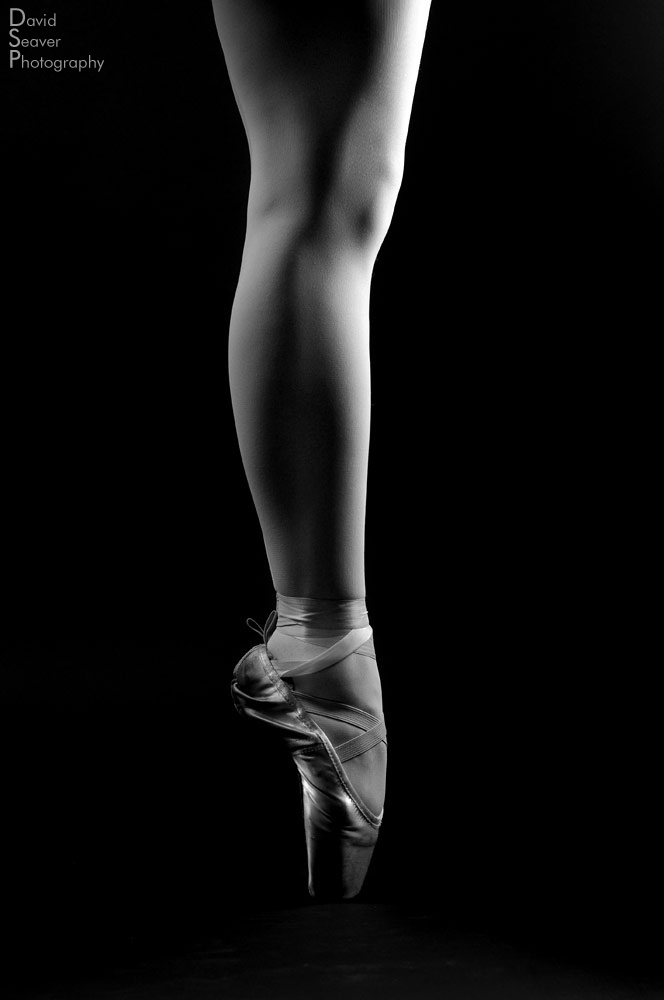
Nikon D2x, 50mm, f5.6, iso 100, two studio flashes, soft boxes
Let me know what you think.
More to come…
How to take great photos of a ballerina at sunset
I had the wonderful opportunity to photograph ballet dancer Sarah Steward dancing along the shores of Lake Champlain the other day. After the crazy rain we’ve been having, the skies cleared and a magnificent sunset gave us just the backdrop we were looking for. The balmy weather quickly changed to strong winds and 38 degree water soaking us, but I think the results are worth the temporary discomfort.
As always, all the photos are available for sale as prints or digital stock here.
The setup for these photos is fairly simple. The main shot we were looking for was a silhouette of her dancing with Lake Champlain and the Adirondack mountains in the background at sunset.
The main thing about shooting silhouettes is to watch out for lens flare. It can sometimes look nice to incorporate the lens flare into the shot, but I was looking for a clean silhouette and the less flare the better.
Lens flare is from unwanted light striking the lens glass. It manifests itself in two basic forms, a haze that can wash out the deep shadows of a silhouette, and dots of rings of light coming from the direction of the light source. If you’re shooting directly into the sun or another light source, there’s really nothing you can do about it, but if the light is just out of frame, you can shade the lens to reduce the flare.
Using the lens hood is a good place to start. I had my assistant holding a reflector just over the end of my lens to cast a shadow on my lens and cut out the flare.
All of these photos were shot with Nikon’s D2x camera with it’s ISO set to 100. The D2x may not have the most sensitive sensor, but at 100 ISO it produces some of the smoothest and best files I’ve seen out of any current digital camera.
Nikon D2x, 50mm, f1.8, 1/2500 sec
Nikon D2x, 50mm, f7.1, 1/1250 sec
Nikon D2x, 17-35, f7.1, 1/180 sec
Nikon D2x, 17-35, f5.6, 1/500 sec
Nikon D2x, 17-35, f7.1, 1/500 sec
Nikon D2x, 17-35, f5.6, 1/500 sec
Nikon D2x, 17-35, f5.6, 1/500 sec
Nikon D2x, 17-35, f3.5, 1/100 sec, SB-900, 16″ softbox, radio transmitter
I decided to add a little light to really make things pop. I was using a Nikon SB-900 with a 16″x16″ softbox, camera left, tightly held by my assistant as the wind was really picking up. I would have used the Nikon i-TTL, but there was too much light, and the wind was really whipping, so I decided to trigger the flash with a radio transmitter to ensure it would fire each time. The flash was set to M 1/4 power.
I was trying to balance the ambient light with the flash. I had to keep the shutter speed below 1/160th for the radio transmitters, and wanted the sunset to be darked a bit more than the flashed area to get some real deep colors in the sky and mountains. The ambient it about 2 stops under normal exposure, and the flash is right on.
Nikon D2x, 17-35, f5, 1/100 sec, SB-900, 16″ softbox, radio transmitter
Nikon D2x, 17-35, f5, 1/100 sec, SB-900, 16″ softbox, radio transmitter
More to come.



